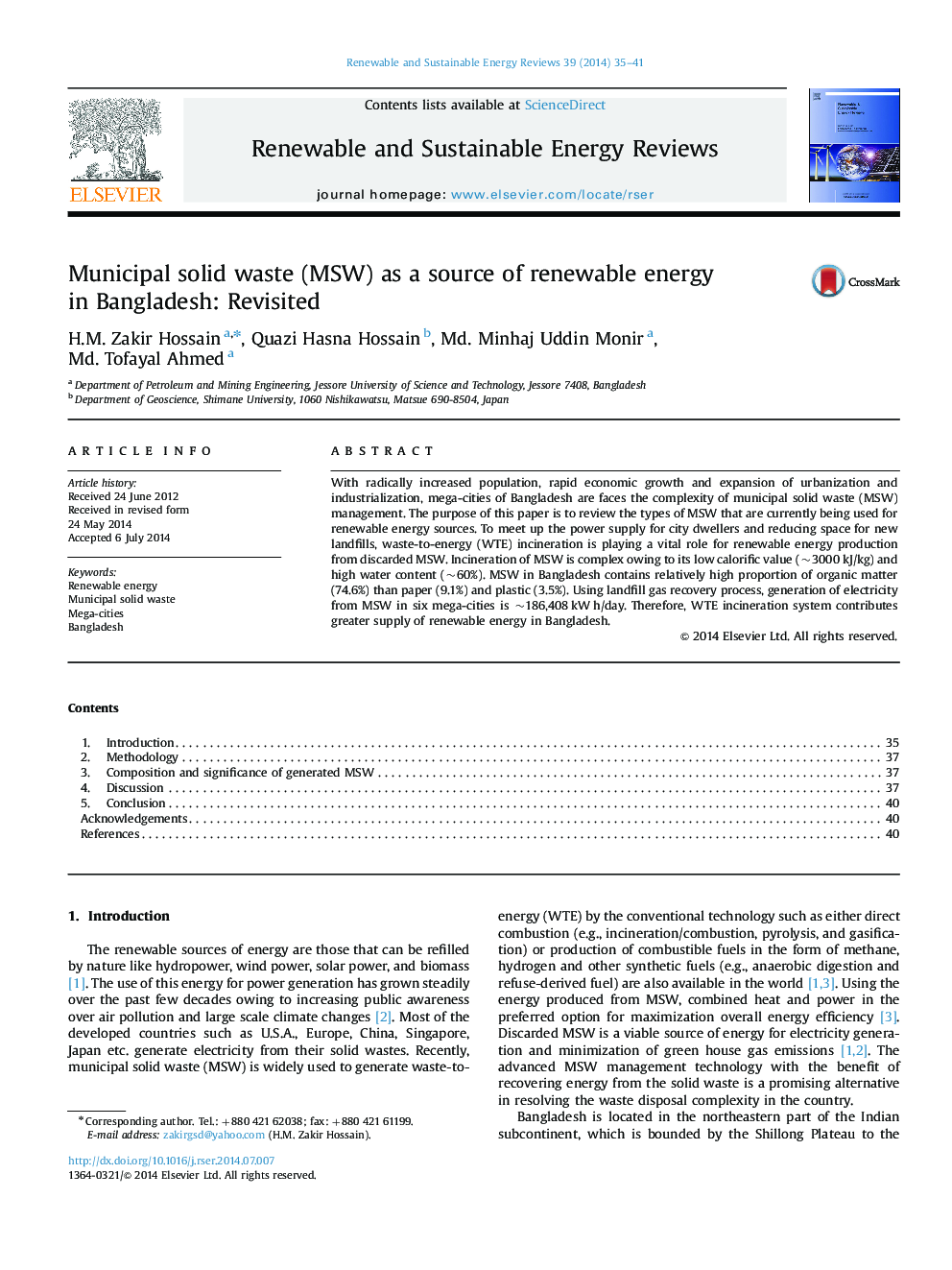| Article ID | Journal | Published Year | Pages | File Type |
|---|---|---|---|---|
| 8118862 | Renewable and Sustainable Energy Reviews | 2014 | 7 Pages |
Abstract
With radically increased population, rapid economic growth and expansion of urbanization and industrialization, mega-cities of Bangladesh are faces the complexity of municipal solid waste (MSW) management. The purpose of this paper is to review the types of MSW that are currently being used for renewable energy sources. To meet up the power supply for city dwellers and reducing space for new landfills, waste-to-energy (WTE) incineration is playing a vital role for renewable energy production from discarded MSW. Incineration of MSW is complex owing to its low calorific value (~3000Â kJ/kg) and high water content (~60%). MSW in Bangladesh contains relatively high proportion of organic matter (74.6%) than paper (9.1%) and plastic (3.5%). Using landfill gas recovery process, generation of electricity from MSW in six mega-cities is ~186,408Â kWÂ h/day. Therefore, WTE incineration system contributes greater supply of renewable energy in Bangladesh.
Related Topics
Physical Sciences and Engineering
Energy
Renewable Energy, Sustainability and the Environment
Authors
H.M. Zakir Hossain, Quazi Hasna Hossain, Md. Minhaj Uddin Monir, Md. Tofayal Ahmed,
